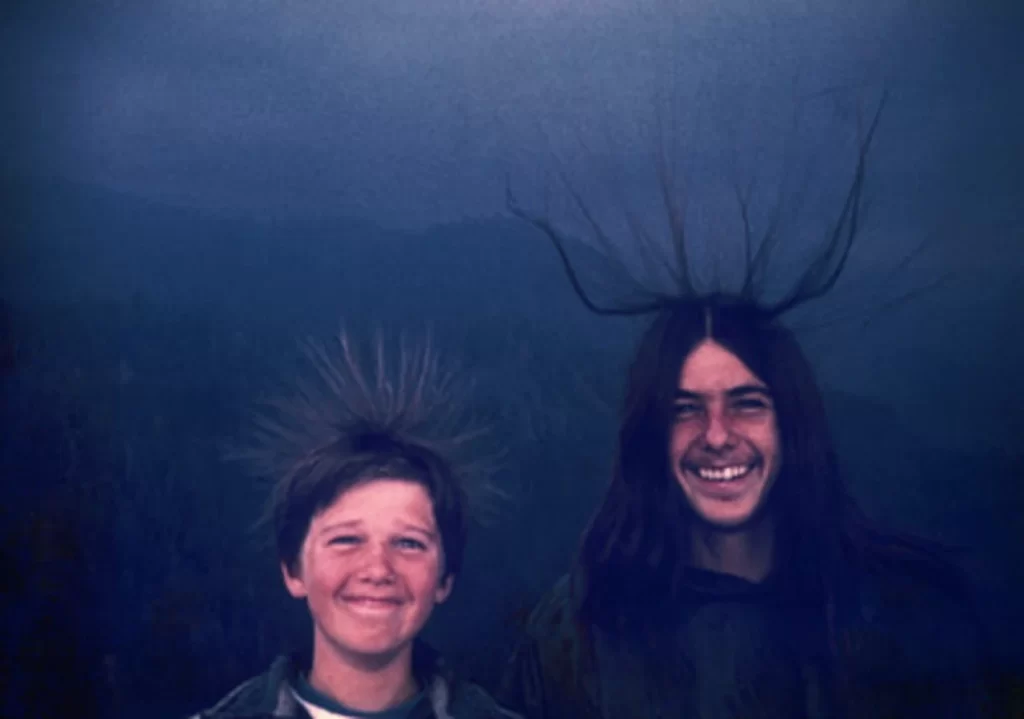
In the grand tapestry of nature’s phenomena, there are few things as seemingly whimsical yet profoundly significant as the moment your hair stands on end during a thunderstorm. This curious occurrence, often met with laughter and surprise, holds within it an urgent message from the natural world—a warning of the potential danger lurking in the charged atmosphere. This article delves into the phenomenon of static hair, unraveling its mysteries and imparting crucial knowledge on lightning safety, a topic of paramount importance for outdoor enthusiasts and casual observers alike.
Unraveling the Science: Static Hair as Nature’s Warning
The Electrifying Truth Behind Static Hair
Static hair occurs when the electric field in the atmosphere becomes so strong that it ionizes the air around us, leading to a separation of charges. Our bodies can become charged objects, and the hair strands, trying to get as far away from each other as possible due to the same charge they carry, stand on end. This is not just a fascinating party trick by Mother Nature but a clear indicator that the conditions are ripe for a lightning strike.
The McQuilken Incident
The harrowing experience of the McQuilken teens in the 1970s stands as a potent reminder of lightning’s swift and merciless force. Their story, captured moments before a lightning strike altered their lives, exemplifies the critical need for awareness and preparedness when faced with the signs of an approaching thunderstorm. (Read more)

Moments after this photo was taken, Sean and Michael McQuilken were struck by lightning – Both boys survived
Decoding the Message
Understanding the science behind static hair transforms it from a curious anomaly into a critical warning system. When your hair stands on end in an open area, especially during a thunderstorm, it’s nature’s way of telling you that lightning is not just possible—it’s imminent. The ground below you is charged, and a lightning strike may be seeking a path to discharge that energy, potentially through you.
Embracing Lightning Safety: Steps to Protect Yourself
Given the grave risks associated with lightning strikes, recognizing the warning signs, such as static hair, and knowing how to respond can mean the difference between safety and peril.
Immediate Actions for Safety
- Seek Shelter Immediately: At the first sign of static hair or any indication of an approaching storm, move indoors or into a car with a metal roof and closed windows. Avoid small sheds or open structures.
- Minimize Contact with the Ground: If caught outside without shelter, crouch down with your feet together, minimizing your contact with the ground. Never lie flat on the ground as this increases your exposure to electrical currents.
- Avoid Tall Objects: Stay away from tall, isolated objects like trees, poles, or metal fences which can attract lightning.
- Keep Distance from Water: Water conducts electricity. If you’re near a body of water, move away immediately.
- Put Off Electronic Devices: Turn off and put away electronic devices, as they can attract lightning to some extent.
Long-term Preparations
- Awareness and Planning: Before heading outdoors, check the weather forecast and plan accordingly. Avoid outdoor activities when thunderstorms are predicted.
- Learn First Aid: Knowing how to administer CPR and first aid can be lifesaving if someone is struck by lightning or if you need to assist until professional help arrives.
Beyond the Storm: A Broader Perspective on Safety and Awareness
While static hair serves as a direct warning against the immediate threat of lightning, it also symbolizes the broader need for awareness and preparedness in our interactions with the natural world. Respecting nature’s power and understanding its signals can greatly enhance our safety and enjoyment of outdoor adventures.
Cultivating Respect for Nature
Embracing a healthy respect for nature’s forces encourages responsible behavior and decision-making when venturing outdoors. It’s about balancing our desire for exploration with an understanding of the risks involved.
The Importance of Education
Educating ourselves and others about natural phenomena and safety measures is crucial. Sharing knowledge about signs like static hair and appropriate responses to them can empower more people to stay safe during thunderstorms.
Conclusion: Listening to Nature’s Cues
The phenomenon of static hair is a perfect example of how nature communicates with us, offering warnings and wisdom in equal measure. By understanding what static hair signifies and how to respond to it, we not only protect ourselves from the dangers of lightning but also deepen our connection with the natural environment. As we navigate life’s adventures, let’s remember to listen attentively to these subtle cues from nature. After all, safety doesn’t just happen; it’s built on a foundation of awareness, preparation, and respect for the forces that shape our world.






